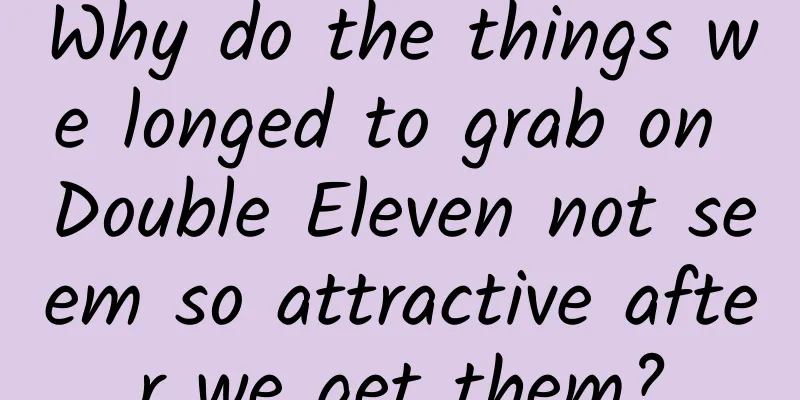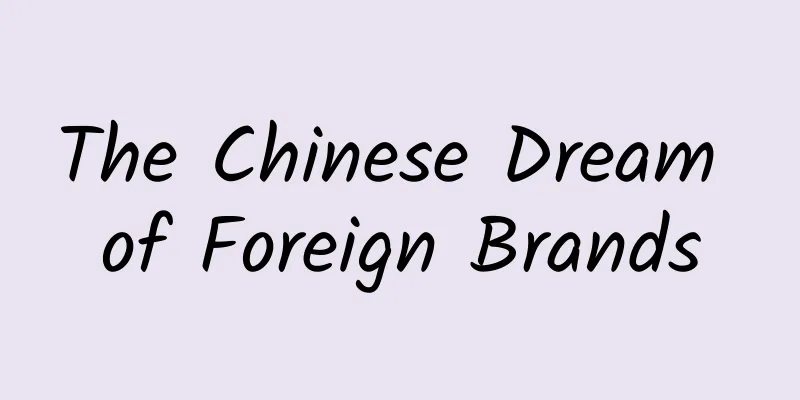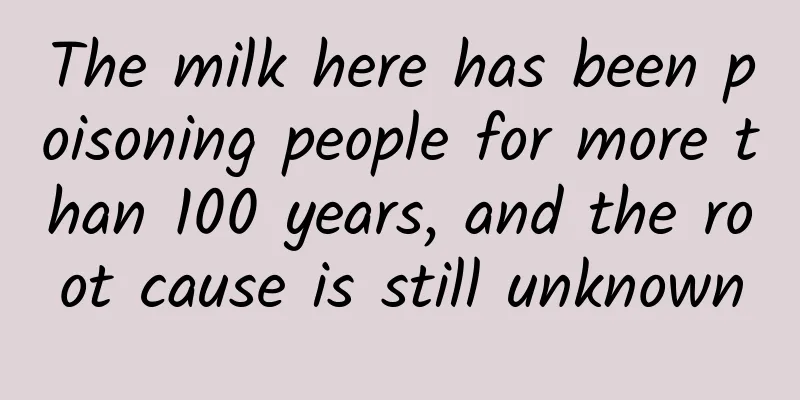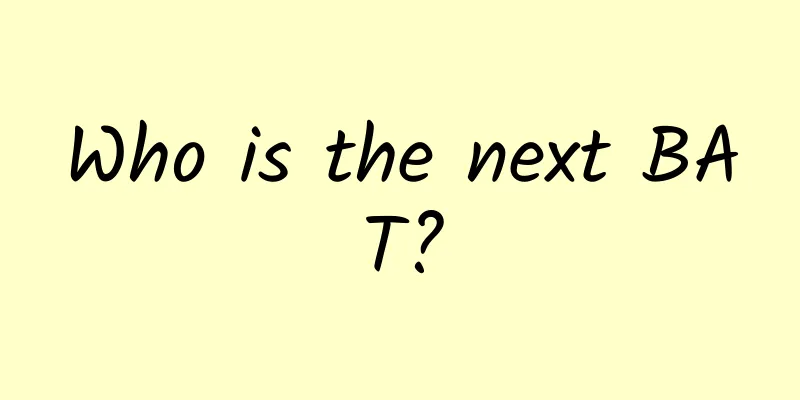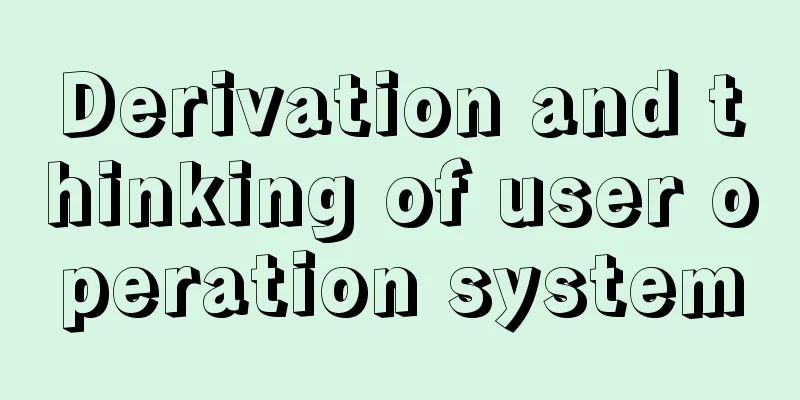Five elements of user reach: materials, channels, and objects!

|
My definition of user reach is: sending specific messages to specific users through specific channels in specific scenarios based on specific purposes. User reach, as a product operation tool, has penetrated into every aspect of our lives. It can be said that in the world of mobile Internet, all products are inseparable from reach, and all users live in reach. However, many times, as product/operation personnel, when we need to send a certain type of message to users, we add a new type of reach. This situation is widespread, but it is often fragmented and unsystematic. From the user's perspective, it feels like it is being forced upon them. Therefore, a systematic understanding of user reach is very important for product planning or operation. Based on my own experience in VIP reach at Dianping, I would like to talk to you about the five elements of user reach. Generally speaking, the five elements of user reach include: materials, channels, objects, scenarios, and goals. Similar to the logical relationship between the five elements of user experience, starting from the shallow level that users can directly perceive and gradually going deeper, the logical relationship between the five elements that users touch is shown in the figure. 1. Materials The material is the content that we can directly receive when we are reached. It includes two parts: one is the display, which is what we can see visually; the other is the continuation, which is the next direction indicated by the reaching message. To be more specific, display generally includes three types: text, pictures and graphics, while the connection includes two elements: links and landing pages. When preparing to reach out to the material, we tend to make the following mistakes: First: The data cannot be tracked later. Every time we make a contact, we always have a certain goal, and most of the time, we use the open rate to measure the effectiveness of this contact. But many times we forget to embed dots in the links, which results in us not knowing how many users actually opened the landing page. Second: inconsistency between display and implementation. In order to increase the open rate as much as possible, many people do not hesitate to exaggerate, resulting in the displayed content being far from the final landing page content, which makes users feel deceived. This "crying wolf" approach will lead to a significant decrease in users' trust in the product. Therefore, the key words for the element of reach material are: data and consistency. 2. Channels Channel refers to: through what means does the content reach users? For different products, the channels for reaching them are mostly fixed, mainly on-site and off-site. In-site channel: can only be seen after checking in on the APP. For example, the common in-site notifications and pop-ups. Notifications from Dianping.com This is the off-site channel pop-up window on the homepage of Dianping: you can receive it even without opening the APP. Common ones include app-push, WeChat push and SMS push. There are generally two channel-related indicators: reach rate and open rate. For example, I want to send an app-push to 1,000 users on the platform, but only 800 people receive it, so the arrival rate is 80%. Among these 800 people, only 80 people open it, so the opening rate is 10%. Why did only 800 people receive it? Because the remaining 200 people turned off the notification button in their phone settings (sounds familiar, right? I do this all the time). The following table organizes these five commonly used channels based on three indicators: coverage, reach and open rate. Note: The larger the open rate value, the higher the open rate is. 3. Target When it comes to the third element, we need to solve the problem of which users to reach. This step actually involves our original intention of reaching users, sending the right content to the right users and ultimately achieving the reach goal. To achieve this goal, we first need to differentiate users. User differentiation mainly includes two methods: stratification and profiling. They all classify users and ultimately achieve a reasonable combination of objects, channels, and materials. Stratification is ranking based on criteria. Taking Dianping as an example, the main stratifications I know are:
Profiling is clustering based on attributes. Common ones include: region, age, gender, browsing preferences, consumption habits, etc. But what needs to be explained here is that user segmentation is a necessary step in user operation. It is a very independent and critical task. Reach is only one usage scenario of user segmentation. 4. Scenario This is also a very critical factor and an element that tests product or operational capabilities, that is, under what circumstances to make contact. The context is very important. For example, if you have just had a physical examination and found that you are overweight and have a tendency to fatty liver. At this time, you pass by a gym, and the guy handing out flyers at the door says to you with a smile, "Let's learn about swimming and fitness," and you are likely to start a chat with him. On the contrary, if you just got off the subway and were rushing to work and were about to be late, and you passed by a gym and the guy handing out flyers at the door smiled and said to you, "Let's learn more about swimming and fitness," you would most likely just wave your hand and leave. The guy didn’t change, the message didn’t change, the location didn’t change, the words didn’t change, but the effect was completely different—because the scene changed. In my opinion, the quality of the scenario is the most important factor in determining whether a customer contact is successful. Here I will only explain two main scenarios. When I have the chance, I will explain in detail how to choose the right scenario for successful contact. I divide the scenarios into two types: feedback type and driving type, as shown in the figure below. In the feedback scenario, the user performs certain actions on the product, and the product then responds (the product experience without action response is very poor). These responses mainly fall into two categories: one is interactive actions, such as changes in button status or jumping to a new page; the other is touch, which is a closed-loop feedback of user actions and serves to improve the basic experience. In the driving scenario, the product actively reaches out to users, and users generate certain core behaviors, which in turn feed back certain value to the product. Usually, the driving scenario serves the operational strategy, which will be discussed in the next section. In comparison, feedback scenarios are easier for users to accept because the users take the initiative to perform certain actions, which in turn triggers the feedback. However, driving scenarios are not easily accepted by users. After all, if the touch is inappropriate, users will feel forced to accept them, and will have negative emotions such as being invaded, harassed, and confused. Whether it is feedback-based or driven, the core of its success is that the content reached is useful to users. This is very obvious in the example just given. V. Objectives The goal is why, why you want to make this reach, this is the core that supports the entire reach value. I divide the goals into two types: product goals and operational goals. Of course, I only know that this division is still vague, but it is enough for understanding and reaching out. The product goal is to improve the product experience chain. All product goal-oriented contacts are feedback-type contacts. If users receive the reach, their favorability toward the product will increase, and they will have thoughts like "Thank you for the reminder" or "Oh, I almost forgot, fortunately I was reminded." Then the reach has achieved the product goal. The operational goals are much more complicated, but the essence remains the same: if the reach is successful, the core behaviors generated by the users will have direct value to the operational strategy itself. If this link is not closed, then the entire reach based on operational goals is wrong, and it should be stopped immediately even if the data is good. For example: the purpose of reach in event operation is to get more users to participate in the event, so after receiving the reach, users should go directly to the event page through the link and be able to participate in the event quickly; and in user operation, no matter what behavior the user generates, the reach can correspond to any link in the AARRR model (attracting new users, activation, retention, monetization, and self-propagation); in content operation, the behavior generated by the user must be to contribute content. If it can only improve the visit index in the end but has no effect on the content contribution index, it means that this is not a successful reach. To summarize: To achieve reach based on operational objectives, we must firmly grasp the closed loop of reach-action-value. At this point, we have basically introduced the five elements of user reach. To summarize: user reach refers to sending specific messages to specific users through specific channels in specific scenarios based on specific purposes, which includes five major elements: materials, channels, objects, scenarios, and goals. What I want to say is that this is not an official division, nor is it recognized by the industry, but at least this is how I look at user reach, and this is how I break it down and apply it. If it can help you, then I think it’s worth it. Related reading: 1. User operation: new funnel model for conversion analysis! 2. User operation: How to use B-side operation thinking to increase user growth? 3. Product operation: How to use data analysis to drive product user growth? 4. APP user growth: One model solves 90% of growth problems! 5.How to increase users? Take Pinduoduo and Xiaohongshu as examples 6. Triggering user growth: Is user operation just about attracting new users? 7. User operation: What else can you do to attract new users without fission users? 8. User operation: how can financial products awaken dormant users? 9. User operation: How to make use of private domain traffic? Author: Dalige who loves to think Source: Dalige who loves to think |
<<: Information flow of Internet promotion channels!
>>: Features of APP promotion, characteristics of App promotion
Recommend
The latest news on the lifting of the lockdown of Shanghai epidemic communities in 2022: When can it be fully lifted?
Recently, many primary schools in Shanghai are un...
1-year-old baby died of poisoning! This thing is in almost every household! Be careful!
For Xiaoxi (pseudonym), a 1-year-and-4-month-old ...
How does Apple operate after-sales service? Teach you these 25 perfect details
Recently, I placed an order for a laptop on Apple...
German quality, reciprocating double blade heads, Xiaomi Braun electric shaver redefines men's charm
Someone once said that Mijia's products never...
Gastric cancer is becoming more common among young people. How can young people prevent gastric cancer? Please do these four things
In early 2021, the World Health Organization'...
Special: How magical is the Chishui River?
On the land of China Among thousands of rivers Ch...
BMW Group Financial Report: BMW Group's revenue in 2024 is 142.38 billion euros, down 8.4% year-on-year
Recently, the BMW Group released its 2024 and Q4 ...
Contraceptive pills in urban sewage could cause freshwater ecosystem collapse
Ingredients from oral contraceptives in sewage tr...
The strongest sandstorm this year is coming, why can't the shelterbelt forest stop it?
When I woke up one night, my glass windows were c...
Black cars go with white bird droppings, and white cars go with black bird droppings. Is it a coincidence?
Recently the tree has turned green again, and its...
How to do live streaming sales from 0 to 1
In 2016, live streaming e-commerce entered the pu...
Is oxygen more refreshing than coffee? Some people tried it and found that...
There is a popular saying on the Internet these d...
What will happen to your body if you eat one sausage a day? Is it okay to eat a sausage that costs 2 yuan?
"Give me a sausage, thank you!" Image s...
Open your eyes, shrug your shoulders, and awaken: the paradox of humanoid robots and the final fantasy
The most terrifying thing recently is the humanoi...
The subscription account messages are unread, where are all the fans?
Most of the public account fans are losing contac...
